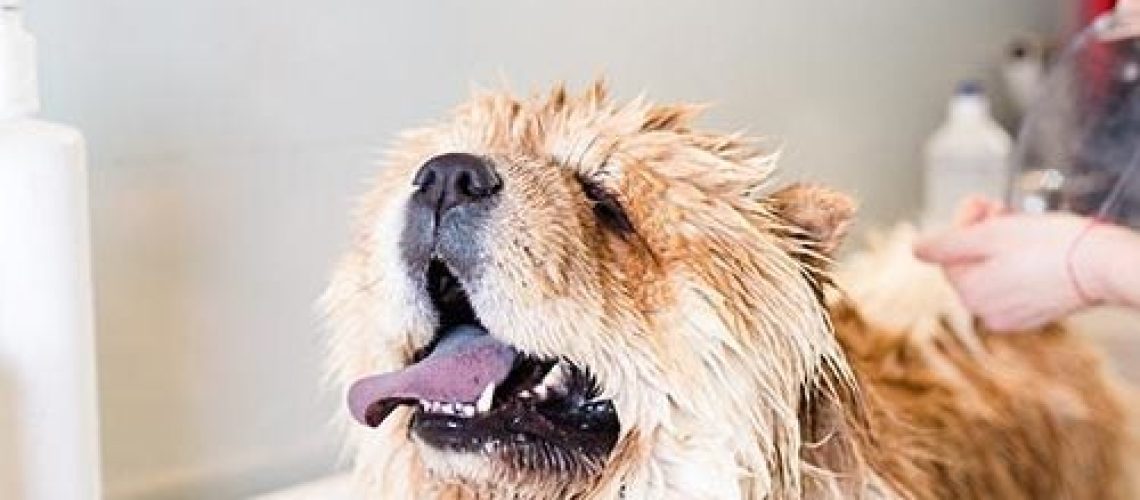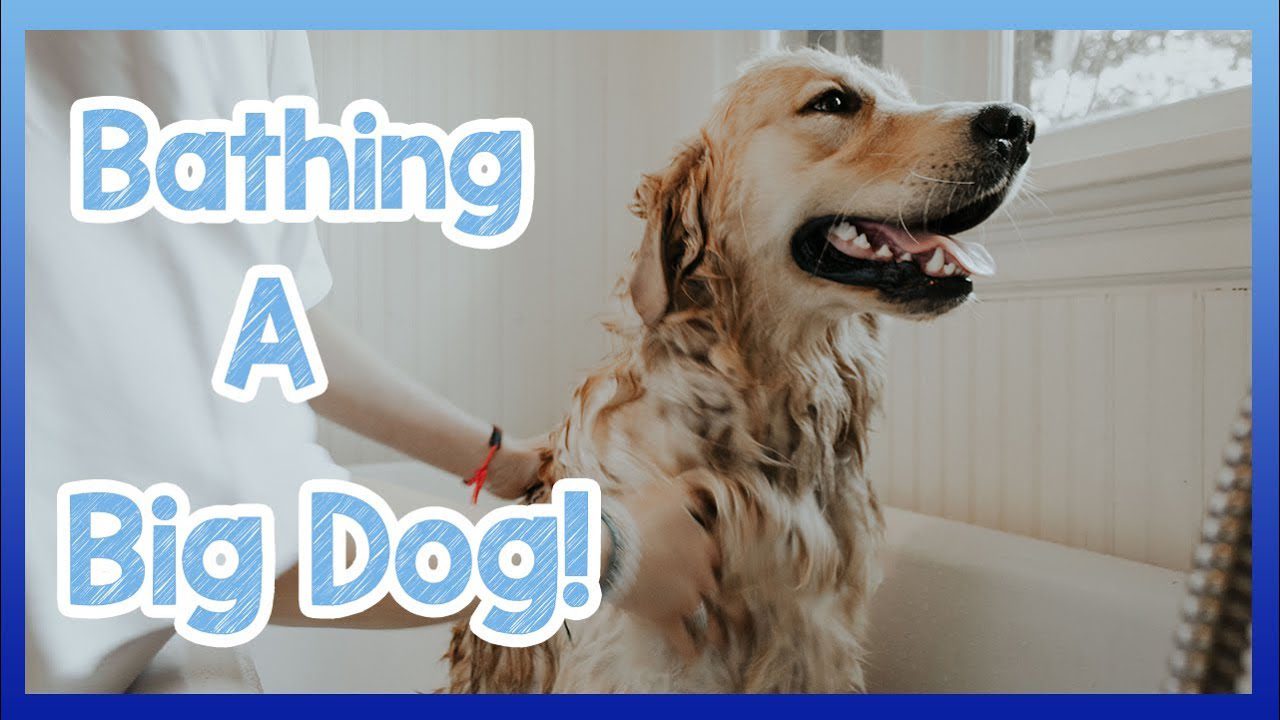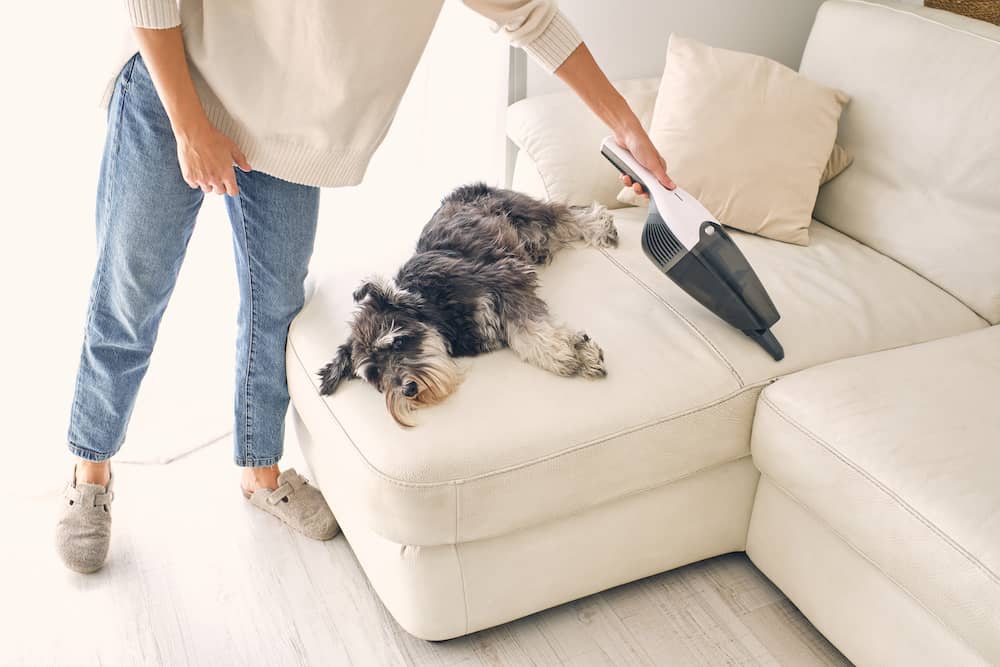Are you unsure about how frequently you should be washing your furry friend? Discover the optimal bathing routine for your dog with our helpful guide.
Key Takeaways:
- The frequency of dog baths depends on the breed, activity level, and skin condition of the dog.
- Over-bathing can strip the natural oils from a dog's skin and coat, leading to dryness and irritation.
- Generally, most dogs only need to be bathed every 2-3 months unless they have specific skin issues or get excessively dirty.
- Regular brushing and grooming can help keep a dog's coat clean and reduce the need for frequent baths.
- It is important to use a dog-specific shampoo that is gentle on their skin and pH-balanced to avoid causing any harm or discomfort.
Why is it important to wash your dog regularly?
Regularly washing your dog is important for maintaining their overall health and hygiene. Just like humans, dogs can accumulate dirt, oils, and odors on their skin and fur. These can lead to skin irritations, infections, and a strong unpleasant smell. By bathing your dog regularly, you can remove these build-ups and keep their coat clean and shiny.
Bathing also helps to prevent flea infestations. Fleas are tiny parasites that can cause itching, discomfort, and even transmit diseases to your dog. Washing your dog with a flea shampoo can help kill fleas and prevent them from multiplying.
In addition to the physical benefits, bathing your dog also provides an opportunity for you to check their overall health. While washing them, you can inspect their skin for any abnormalities such as dryness, redness, or lumps that may require veterinary attention.
Benefits of regular dog baths:
- Removes dirt and odors
- Prevents skin irritations
- Kills fleas
- Promotes a healthy coat
- Allows for inspection of the skin for any abnormalities
My personal experience:
I have seen firsthand the positive effects of regular dog baths on my own furry friend. Not only does he look and smell better after a bath, but his overall well-being seems improved as well. His coat is softer and less prone to shedding when I maintain a regular bathing schedule.
How often should you bathe your dog to keep them clean and healthy?
The frequency of bathing your dog depends on several factors including their breed, activity level, and skin condition. In general, most dogs benefit from a bath every 4-8 weeks. However, some dogs may require more frequent baths if they have certain skin conditions or if they get dirty more often.
Over-bathing can strip the natural oils from your dog's skin and lead to dryness and irritation. On the other hand, under-bathing can result in an accumulation of dirt, oils, and odors that can cause discomfort and health issues.
Factors to consider when determining bathing frequency:
- Breed: Some breeds have specific grooming needs. Dogs with longer hair or double coats may require more frequent baths to prevent matting or excessive shedding.
- Activity level: Dogs that spend a lot of time outdoors or engage in activities that make them dirty (such as swimming) may need more frequent baths.
- Skin condition: Dogs with certain skin conditions such as allergies or dermatitis may require more frequent baths with medicated shampoos as recommended by a veterinarian.
My personal recommendation:
I find that bathing my dog every 6 weeks strikes a good balance between keeping him clean and maintaining his skin's natural oils. However, it's important to monitor your dog's individual needs and consult with your veterinarian for guidance on the best bathing schedule for your furry friend.
Factors that can influence how often you should wash your dog
Coat type and length
The type and length of your dog's coat play a significant role in determining how often they need to be washed. Dogs with shorter coats, such as Labradors or Boxers, typically require less frequent baths compared to those with longer coats, like Shih Tzus or Poodles. Longer coats tend to trap dirt and debris more easily, necessitating more frequent bathing.
Activity level and lifestyle
Another factor to consider is your dog's activity level and lifestyle. If your dog spends a lot of time outdoors, playing in the mud or swimming in ponds, they may need more frequent baths to keep them clean and prevent any potential skin issues. On the other hand, if your dog is mostly indoors and doesn't engage in activities that make them excessively dirty, they may require fewer baths.
Skin conditions and allergies
Certain skin conditions or allergies can also impact how often you should wash your dog. Some dogs have sensitive skin that can become irritated with frequent bathing. In these cases, it's important to consult with a veterinarian who can recommend an appropriate bathing schedule based on your dog's specific needs.
Tips for determining the right bathing frequency:
- Observe your dog's coat: If it appears dirty or has an unpleasant odor, it may be time for a bath.
- Consult with a veterinarian: They can provide guidance based on your dog's breed, coat type, and any underlying skin conditions.
- Consider their lifestyle: Take into account their activity level and exposure to dirt or allergens.
It's important to strike a balance when determining how often to wash your dog. Over-bathing can strip their skin of natural oils and cause dryness or irritation while under-bathing can lead to a dirty and smelly coat. Regular grooming, including brushing and checking for any skin issues, can also help maintain your dog's cleanliness between baths.
Can washing your dog too frequently harm their skin?
Washing your dog too frequently can indeed harm their skin. Dogs have a natural protective barrier on their skin that helps retain moisture and prevent irritants from penetrating. Excessive bathing can strip away this protective layer, leading to dryness, itchiness, and potential skin problems.
The frequency of bathing largely depends on the individual dog's needs, as mentioned earlier. However, as a general guideline, most dogs only require bathing once every 4-6 weeks. Exceptions may include certain medical conditions or specific instructions from a veterinarian.
To avoid harming your dog's skin while bathing:
1. Use a gentle shampoo specifically formulated for dogs: Avoid using human shampoos or harsh chemicals that can be too drying for their sensitive skin.
2. Rinse thoroughly: Make sure to rinse off all the shampoo residue from your dog's coat to prevent any irritation.
3. Moisturize if necessary: If your dog has dry or sensitive skin, consider using a moisturizing conditioner after bathing to help restore moisture.
4. Monitor for any signs of irritation: Keep an eye out for redness, excessive scratching, or flaky skin after bathing. If you notice any of these symptoms, consult with a veterinarian.
Remember that regular brushing and grooming can help keep your dog clean in between baths without the need for frequent washing.
Signs that indicate when your dog needs a bath
Determining when your dog needs a bath is essential for maintaining their hygiene and overall well-being. While the frequency may vary depending on factors mentioned earlier, there are some signs that indicate it's time for a bath:
Visible dirt or debris:
If you notice visible dirt, mud, or other debris on your dog's coat, it's a clear indication that they need a bath. Regular brushing can help remove some surface dirt, but bathing is necessary for a thorough clean.
Unpleasant odor:
If your dog starts to emit an unpleasant odor even after regular brushing, it may be time for a bath. Dogs can develop odors due to sweat, accumulated dirt, or bacteria on their skin and coat.
Greasy or oily coat:
A greasy or oily coat can indicate the buildup of natural oils and dirt. This can make your dog's fur appear dull and unkempt. A bath with an appropriate shampoo can help restore their coat's natural shine.
Itching or scratching:
If your dog is constantly itching or scratching themselves, it could be a sign of skin irritation or allergies. In such cases, bathing with a hypoallergenic shampoo recommended by a veterinarian may provide relief.
Remember to always use lukewarm water and avoid getting water in their ears or eyes during the bathing process. Additionally, ensure you dry them thoroughly after the bath to prevent any moisture-related skin issues.
Do different dog breeds require different bathing schedules?
Yes, different dog breeds typically have different bathing schedules due to variations in their coats and specific grooming needs:
Short-haired breeds
Short-haired breeds like Beagles or Dalmatians generally require less frequent baths compared to long-haired breeds. Their short coats are less prone to trapping dirt and debris, making them easier to maintain. Bathing every 6-8 weeks is usually sufficient for these breeds unless they become unusually dirty.
Long-haired breeds
Long-haired breeds such as Shih Tzus or Afghan Hounds often require more frequent baths due to their dense and easily tangled coats. These breeds may need bathing every 4-6 weeks to prevent matting and keep their coats clean and healthy.
Water-repellent or double-coated breeds
Breeds with water-repellent or double coats, like Golden Retrievers or Siberian Huskies, have unique grooming needs. Their coats are designed to repel dirt and moisture naturally, so frequent bathing can disrupt the balance of their natural oils. These breeds typically require baths every 8-12 weeks unless they have specific skin issues.
It's important to research your specific breed's grooming requirements and consult with a professional groomer or veterinarian for personalized advice on the ideal bathing schedule.
Special considerations for bathing puppies or older dogs
Bathing puppies and older dogs require some additional considerations due to their specific needs:
Puppies
Puppies have delicate skin that is more sensitive than adult dogs. It's crucial to use a mild puppy shampoo specifically formulated for their sensitive skin. Additionally, puppies may not have fully developed immune systems, so excessive bathing can make them more susceptible to infections. Generally, it's recommended to bathe puppies once every 2-3 months unless they get excessively dirty.
Older dogs
Older dogs may have mobility issues or arthritis that make it challenging for them to stand in the bathtub or tolerate the bathing process. To make bath time easier for them:
- Use non-slip mats in the bathtub to provide stability.
- Opt for a handheld showerhead or a pitcher for rinsing instead of using a hose.
- Ensure the water temperature is comfortable and warm.
- Consider using a gentle shampoo specifically designed for senior dogs, as their skin tends to be more sensitive.
If your older dog has any underlying health conditions or skin problems, consult with your veterinarian before establishing a bathing routine.
Tips for making the bathing process easier and less stressful for dogs
Bathing can be a stressful experience for some dogs, but with the right approach, it can become more manageable:
Positive reinforcement:
Associate bath time with positive experiences by offering treats, praise, or rewards before, during, and after the bath. This helps create a positive association and reduces anxiety.
Prepare the bathing area:
Make sure you have all the necessary supplies within reach before starting the bath. This includes shampoo, towels, brushes, and any other grooming tools you may need. Having everything ready beforehand minimizes stress and keeps the process efficient.
Use a non-slip surface:
Place a non-slip mat or towel at the bottom of the bathtub to provide stability for your dog. This helps them feel more secure and prevents any accidents or injuries.
Start with lukewarm water:
Using lukewarm water is essential to ensure your dog's comfort during the bath. Test the water temperature with your hand or a thermometer to avoid extremes that could cause discomfort.
Gentle handling:
Handle your dog gently throughout the bathing process to avoid causing unnecessary stress or discomfort. Speak in soothing tones and reassure them with calm gestures.
Maintaining good hygiene for your dog between baths
While regular baths are important for maintaining your dog's cleanliness, there are several ways to promote good hygiene between baths:
Brushing
Regular brushing helps remove loose hair, dirt, and debris from your dog's coat. It also stimulates blood circulation and distributes natural oils that keep their coat healthy. The frequency of brushing depends on your dog's breed and coat type but aim for at least once a week.
Dental care
Oral hygiene is crucial for your dog's overall health. Brushing their teeth regularly with a dog-specific toothbrush and toothpaste helps prevent dental issues such as plaque buildup and gum disease. Consult with your veterinarian for guidance on the appropriate dental care routine for your dog.
Ear cleaning
Regularly inspect and clean your dog's ears to prevent infections or excessive wax buildup. Use a gentle, vet-approved ear cleaner and cotton balls to wipe away any dirt or debris. Be cautious not to insert anything deep into the ear canal, as it can cause damage.
Paw care
Check your dog's paws regularly for any signs of injury, irritation, or foreign objects like thorns or burrs. Trim their nails regularly to avoid overgrowth and discomfort. Additionally, wiping their paws with a damp cloth after walks can help remove dirt and allergens.
By incorporating these practices into your routine, you can ensure that your dog maintains good hygiene and stays healthy between baths.
| Conclusion |
| Regularly washing your dog is essential for their hygiene and overall health. However, the frequency of baths depends on various factors such as breed, coat type, and lifestyle. It is generally recommended to bathe your dog every 4-6 weeks or as needed to keep them clean and smelling fresh. Remember to use dog-specific shampoos and proper bathing techniques to avoid drying out their skin. Always consult with your veterinarian for personalized advice based on your dog's specific needs. |
Is it OK to bathe a dog once a week?
The frequency of bathing your dog varies depending on their activity level, coat type, and skin condition. It could range from a few times a week to every few months. Generally, most dogs would benefit from a bath every month or so, but it ultimately depends on the specific needs of the dog.
How often do you give a puppy a bath?
It is generally suggested by veterinarians that puppies are bathed on a weekly basis, unless there are any signs of irritation. It is important to use specialized pet shampoo and conditioner, as these products are designed to be gentle on the puppy's skin and fur.
How often should I bathe my dog in winter?
How frequently should you give your dog a bath in the winter? Typically, it is recommended to bathe them once a month. Molly Bissantz, the owner of Grooming by Molly in Boise, Idaho, suggests following the skin cycle, as it takes about three weeks for their skin to complete a full cycle.
Are dogs happier after a bath?
After taking a bath, dogs often become very energetic and display various behaviors such as relief, happiness, or a natural instinct to regain their familiar scent. Whether you refer to it as a FRAP, the crazies, or the zoomies, the fact remains that post-bath hyperactivity is a common occurrence in dogs.
Do dogs feel better after bath?
By washing the skin and hair coat, you can eliminate various substances such as dirt, allergens, bacteria, and parasites. Additionally, bathing helps to get rid of dead hair and moisturizes and nourishes the skin and coat, providing your dog with relief from discomfort and itchiness.
Do dogs feel different after a bath?
The process of bathing your dog is typically not enjoyable for them, regardless of how often it occurs. Afterward, they often shake off excess water and rub their wet fur on furniture, seemingly trying to remove the feeling of being wet. This behavior can be seen as a dance of sorts, as they try to get rid of the discomfort.

















